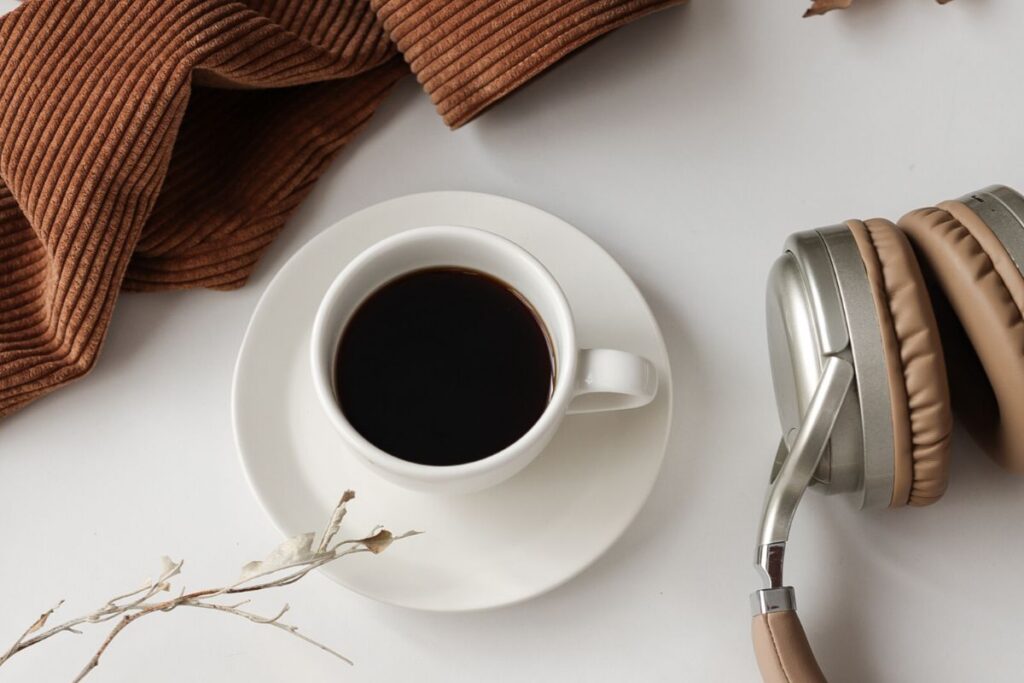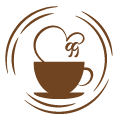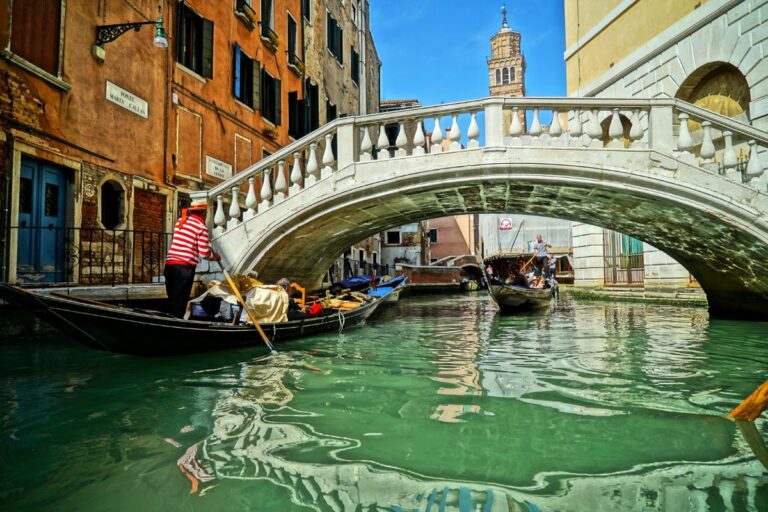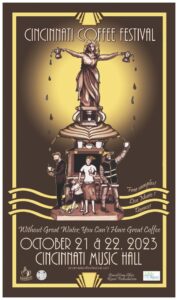Italian coffee culture has set the rules for the rest of the coffee world.
If you want to experience the authentic atmosphere of an Italian bar on your next visit to Italy, there are a few things you should know.
Let’s start with how coffee developed in Italy.
Written by Jozo Salmanić – Croatian barista with 15 years of experience.
Checked and commented by Cristiana Rivolta from historic Caffé Florian in Venice, Italy.
The Beginning Of Italian Coffee History
Have you ever wondered how these magical beans came to Italy?
First Mentions Of Coffee In Italy
It’s the end of the 16th century, and travelers from far away bring rumors about kahve – a concoction made from beans.
That mysterious liquid could keep a man awake for a long time.
It didn’t take long for clever Venetian traders to start importing the magical beans and sell them at ridiculously high prices in pharmacies, where they were known as a cure for digestive issues.
How Did Satan’s Drink Get Approval From Pope
The ongoing popularity of the new drink had two foes – wine sellers that were losing customers and churchgoers that weren’t happy people drink anything that originates from pagan Arab lands.
Things escalated, and Pope Clement VIII got a demand to banish ‘Satan’s drink.’
However, after trying one sip, the Pope quickly concluded coffee is too tasty to be used only by pagans.
Therefore, he sanctified the coffee(!) and gave his blessing for consumption.
Emmy Blotnick wrote for MentalFloss about four more times when people (unsuccessfully) tried to ban coffee.
The First Coffee Shops In Italy
After the Pope’s blessing, coffee consumption was at its peak, especially among students, professors, artists, and scientists.
The first documented coffee shop opened its doors at St. Mark’s Square in Venice in 1683.
Cristiana’s comment: It was named “All’Arabo” (To the Arab’s), as its owner was an Arab.
In the next 90 years, Venice gained 218 coffee shops.
The shops were gathering places of social life for traders, noblemen, and intellectuals. The pillars of coffee culture were set, but we would have to wait a few centuries for the first commercial espresso machines to come to life.
Fun fact by Jozo: In 1776, the Venetian governor banned all women from coffee shops due to morality issues.
Cristiana’s comments: The ban was widely opposed by the baristas (owners of the coffee shops), as their bars were frequented by many married (and not married) couples with a subsequent fall in revenue.
That’s why, Mr. Valentino Francesconi, the then owner of Caffè Florian, asked the city rulers for a dispensation to allow him to entertain ambassadors and their wives at the Florian.
Thanks to the Café’s good reputation, he was granted permission for ladies to be received at the Florian.

How Do Italians Make Their Coffee
The first association with Italian coffee machines is espresso.
However, the espresso machine was invented in the 20th century, and Italians have been drinking coffee since the 17th.
In the beginning, coffee was prepared Turkish-style, with sugar and spices. The 20th-century inventions reshaped the Italian coffee culture again.
Cuccuma – Precursor Of French Drip Coffee Pot
Cuccuma, also known as “caffettiera napoletana” or Neapolitan coffee maker, was the most popular way of making coffee in Italian households.
Later, it was replaced by the Moka pot.
This Neapolitan flip coffee pot was invented at the beginning of the 19th century by a Parisian named Morize.
The first versions were made from terracotta, but later, it was replaced by tin.
How To Use Cuccuma
Cuccuma has three parts:
- Bottom section where you put the water
- The middle section is for ground coffee (fine grind)
- Top pot for serving
You put the water and finely ground coffee into cuccuma and put it on a heat source.
You flip the mechanism upside down when the water boils so hot water can extract the coffee.
Moka Pot
Moka Pot, also known as the percolator, is a rather new invention.
Alfonso Bialetti invented it in 1933, and the new coffee maker became a standard part of every Italian kitchen.
How To Use Moka Pot
Somewhat similar to Cuccuma, the Moka pot also has three parts.
You fill the bottom part with water.
Then you put the filter basket and fill it with finely ground coffee.
After that, you screw the top part, which has a small tunnel in the middle.
You put your Moka pot on the stove. When the water boils, the steam extracts the coffee grounds. The coffee then drips to a top chamber.
Moka pot produces a strong cup of coffee, very close to espresso.
History Of Espresso – The Fast Way Of Brewing Coffee
As the popularity of coffee rose, the coffee houses struggled to serve all their guests.
Making coffee in a Turkish way was slo-oo-ow.
That’s where inventors stepped in.
The first patent for fast extraction of coffee using hot water and steam was in 1884 by Angelo Moriondo.
However, that version wasn’t so practical or widely used.
In 1901, Italian mechanic Luigi Bezzera improved and patented the machine, which became faster and more cost-effective. Desiderio Pavoni bought that patent and founded the La Pavoni company in 1905.
In 1906, World’s Fair in Milan had the honor to see the first commercial espresso machine in the world – Bezzera L. Caffè Espresso.
The term espresso was coined that year. Espresso means fast, as a fast brewed coffee.
Italian Coffee Types – How To Order A Coffee In Italy?
Don’t expect frappuccinos or similar Starbucks drinks in Italian bars.
Starbucks didn’t accomplish much in Italy.
Here is what you can order.
Espresso Is The Most Common Order
Italians just need to say caffe, and the barista will make them espresso – a strong 1-oz shot of coffee.
When tourists order caffe, the barista will usually ask them if they want espresso, to avoid misunderstanding.
Cristiana’s comments: If an Espresso is not strong enough for your palate, you can order a caffè ristretto or caffè corto (short coffee) – this is a concentrated Espresso.
On the contrary, if you’d rather dilute the strong taste, you ask for a caffè lungo (long): it is a “longer” Espresso, served in the same usual cup, but with more water added.
They are both quite popular different versions of the classic Espresso.
Caffe Macchiato – A Dirty Coffee
Caffe Macchiato is a shot of espresso with a splash of warm milk. The milk forms a stain – ‘macchia’ on the surface of the espresso.
Cristiana’s comments: Actually, the Espresso could be:
- Macchiato caldo: with warm (calso) milk
- Macchiato freddo with cold (freddo) milk, often put in a separated small jug, so that the customer can pour as much milk as they like
Cappuccino Is Served Before 11 AM
Cappuccino is equal parts espresso, warm milk, and microfoam.
It is considered a morning drink, and some baristas even refuse to serve it in the afternoon.
Caffe Latte Is a Milky Pleasure
Caffe Latte is one part espresso, two parts steamed milk, and a little microfoam on the top.
If you order just Latte, you will get a glass of milk, because that’s what it means.
In most cases, baristas know you don’t want a glass of milk, but they are technically right.
Caffe Americano And Gentle US Palates
US troops that stayed in Italy during WW2 didn’t like the strong taste of espresso.
So, they used to dilute it with hot water, so it resembles their favorite drip coffee.
That’s what Caffe Americano is – espresso topped with hot water.
These are the most common drinks in Italian cafes.
However, the choice is endless, and almost every Italian region has its special espresso-based drink. It usually includes mixing with liqueurs, though.
Italian Coffee Drinking Rules And Etiquette
When you are in Rome… Here is how Italians drink their coffee and what you should know before ordering one.
Coffee Comes With A Glass Of Water
With every cup of coffee, you will get a small glass of water, to clean your palate. That way, you can enjoy the true taste of coffee.
No Sugar
Cristiana’s comment: Coffee should be drunk without sugar!!!
No Caffes Or Coffee Shops, Just Bars
An Italian bar is usually a place that serves coffee, pastries, and alcohol. There is no division between a coffee shop and a place that serves alcohol.
Also, they open early and close late.
No Double Or Triple Shots Of Espresso
Espresso is regularly served as one shot – around 1 oz. If you want more, order a new one.
Cristiana’s comments: Ordering a double Espresso is not unheard of, especially if you need to stay awake or you need a larger dose of caffeine after quite a typical Italian Sunday lunch with family or a traditional (and very long!!!) celebration lunch (weddings, Christmas, Easter, anniversaries…).
Location, Location, Location
Drinking coffee at the counter means you will finish it almost immediately. That’s why it costs less.
If you sit at a table to enjoy your coffee for a longer time, your coffee will cost more. And if you want to sit on a terrace on a crowded day, it will cost even more.
No Cappuccinos Or Lattes After 11 AM
I once asked an Italian barista why, and he asked me if I would drink a glass of milk after lunch. Touche!
So, no milky drinks in the afternoon, as Italians think it’s bad for digestion. If you want to round up your meal, order an espresso.
Italian Coffee Culture VS Starbucks
On one side we have Italian coffee culture: tasty espresso in small cups best enjoyed talking to friends.
Then we have Starbucks coffee culture: oversized drinks full of sugar that would probably make any old-school Italian cry. Top that with loud teenagers, flashy smartphones, and overpriced products.
The clash of cultures happened, and Starbucks received a message from the Italians. Currently, Starbucks has only 20 coffee shops in Italy.
Just for comparison, New York City has 241 Starbucks shops! You can check the numbers for the rest of the big US cities in this Statista report.
Suspended Coffee – An Act Of Compassion
Suspended coffee is also known as pending coffee or caffè sospeso.
But what is it all about?
The tradition started in Naples, the third largest city in Italy.
If you want to do a good deed anonymously, you pay an additional coffee for not-so-lucky people who might come to a bar and ask for sospeso.
The tradition was dead for some time, but now it has a comeback. It also became popular in Spain, Argentina, the USA, Canada, and many other countries.
You can get involved if you take a look at SuspendedCoffees.
Helping a fellow human can take many beautiful forms, but suspended coffee is one of the purest. Currently, the largest one-time buy was in 2021 – an anonymous philanthropist bought 501 coffees in Istanbul.
Photos by Mentor Henry and Temmuz Uzun.





